Nagano, Japan is home to a wide variety of birds that make the region a haven for birdwatchers. With its diverse landscapes, Nagano offers a unique opportunity for spotting different species of birds that can’t be found anywhere else in Japan.
From the Japanese Pygmy Woodpecker to the Japanese Accentor, Nagano is a great destination for both amateur and professional birdwatchers.
From the lush green valleys to the rugged mountains, Nagano is sure to provide a breathtaking experience for anyone who takes the time to observe its feathered inhabitants..
1. Green Pheasant
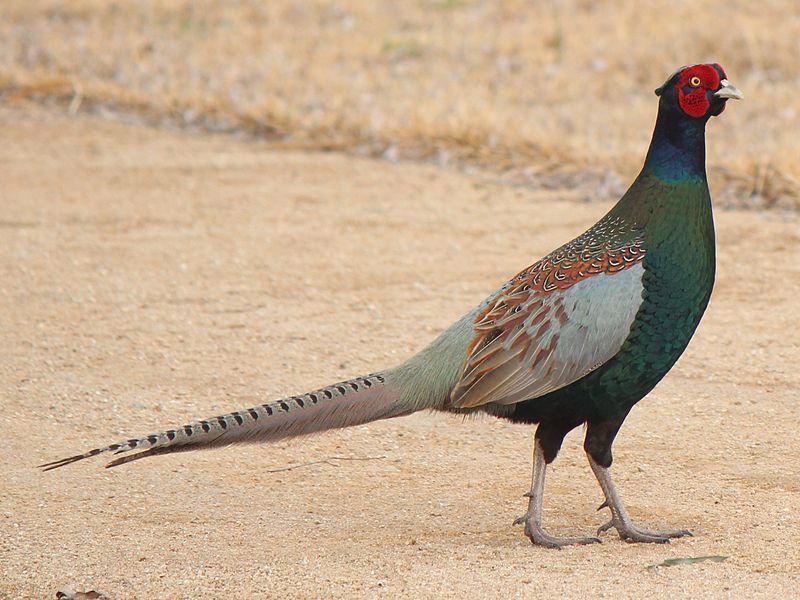
The green pheasant, scientifically known as the Phasianus colchicus, is a species of bird native only to the Japanese archipelago. It is an omnivorous bird, meaning that it consumes both plants and animals, and is the national bird of Japan.
Some taxonomic authorities consider the green pheasant to be a subspecies of the common pheasant, however, it is also commonly known as the Japanese green pheasant.
The green pheasant is a medium-sized bird, with males growing to be around 70 cm in length and females being slightly smaller. The male’s plumage is a bright emerald green, while the females is a duller olive-brown. They have a long, barred tail, and a white eye-ring.
Their diet consists of a variety of plant and animal matter, such as leaves, berries, insects, and small amphibians or reptiles. The green pheasant is an important species to Japan both culturally and ecologically.
It is an important part of Japan’s national identity and has been used as a symbol of the country for centuries.
In addition, the pheasant is an important part of the Japanese archipelago’s ecosystem, as it helps to control insect populations and disperse seeds of native plants.
| Kingdom | Animalia |
| Phylum | Chordata |
| Class | Aves |
| Order | Galliformes |
| Family | Phasianidae |
| Genus | Phasianus |
| Species | P. versicolor |
2. Falcated Duck
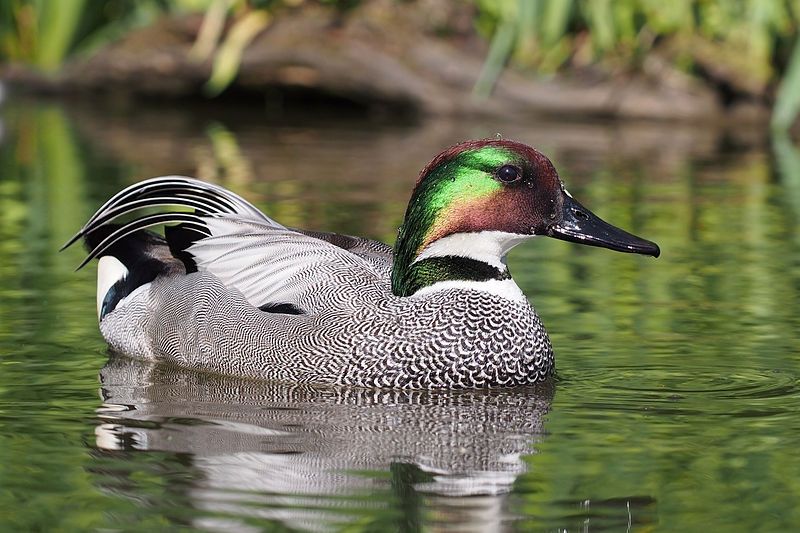
The falcated duck, also known as the falcated teal, is a species of dabbling duck native to the east Palearctic region. It is a medium-sized bird and is similar in size to the gadwall.
It has a distinctive falcate (curved) shape to its wings, which is the source of its common name.The falcated duck is a migratory species, breeding in northern China and then migrating to wintering grounds in Korea, Japan, and parts of Russia.
The bird’s habitat is usually wetland areas, where it feeds on aquatic vegetation and invertebrates.
Males are easily distinguished from females by their bright chestnut-colored head and neck, which contrast against their pale gray body. The species is listed as Near Threatened on the IUCN Red List, mainly due to habitat loss and degradation.
Its population has declined significantly in the past 20 years due to the loss of wetlands, overhunting, and pollution. Conservation efforts are underway to try to protect the species and its habitat.
These efforts include habitat restoration, monitoring of water quality, and implementation of hunting restrictions.
| Kingdom | Animalia |
| Phylum | Chordata |
| Class | Aves |
| Order | Anseriformes |
| Family | Anatidae |
| Genus | Mareca |
| Species | M. falcata |
3. White-Bellied Green Pigeon
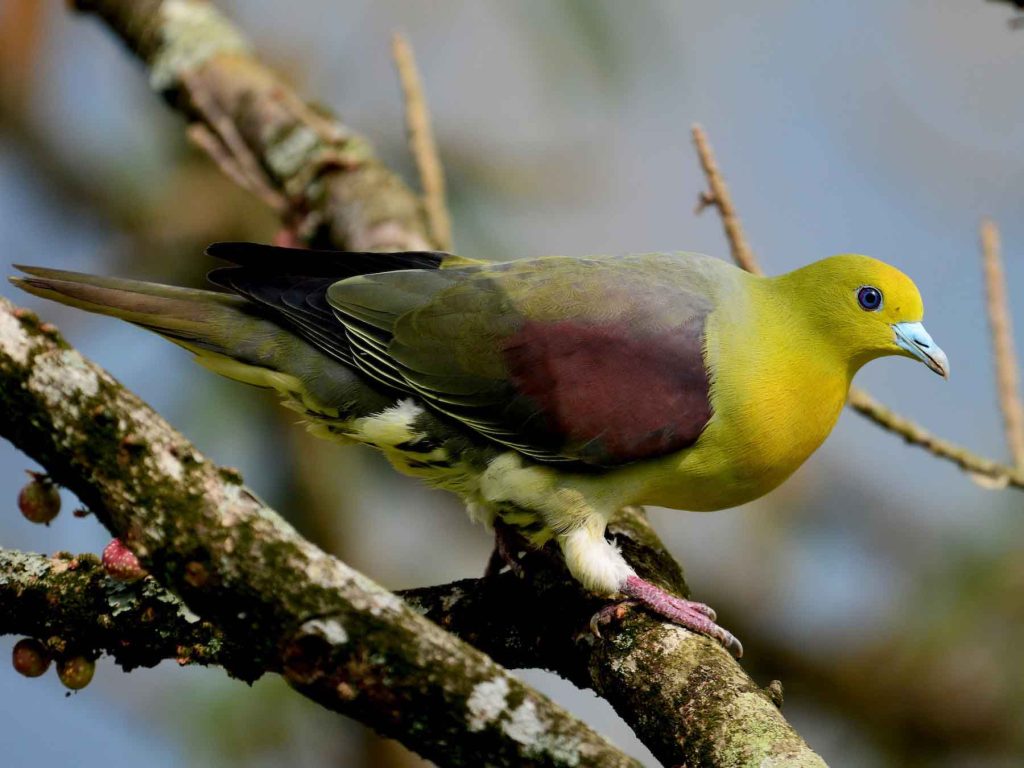
Source: ebird.org
The white-bellied green pigeon is a species of bird belonging to the family Columbidae, which includes doves and pigeons. It is found in various countries across Asia, including China, Japan, South Korea, Laos, Russia, Taiwan, Thailand, India, and Vietnam.
Its natural habitat is temperate forests, which are characterized by mild temperatures and moderate rainfall. The white-bellied green pigeon is known for its unusual habit of drinking saltwater. This behavior is uncommon in birds, as most species primarily drink fresh water.
The bird is thought to consume saltwater as a way to obtain essential minerals, which help to supplement its diet of fruits and berries. The white-bellied green pigeon is an important species in its natural habitat, as it helps to disperse the seeds of various plants throughout the area.
This contributes to the health of the local ecosystem, as it helps to promote biodiversity and maintain a balance between various species. The white-bellied green pigeon is also a valuable species to birdwatchers, as its distinctive plumage and unique behavior make it an interesting species to observe.
Unfortunately, the species is threatened by habitat loss due to deforestation and other human activities, which has caused its population to decrease in recent years.
Conservation efforts are underway to protect this species and its habitat, in order to ensure its long-term survival.
| Kingdom | Animalia |
| Phylum | Chordata |
| Class | Aves |
| Order | Columbiformes |
| Family | Columbidae |
| Genus | Treron |
| Species | T. sieboldii |
4. Baikal Teal
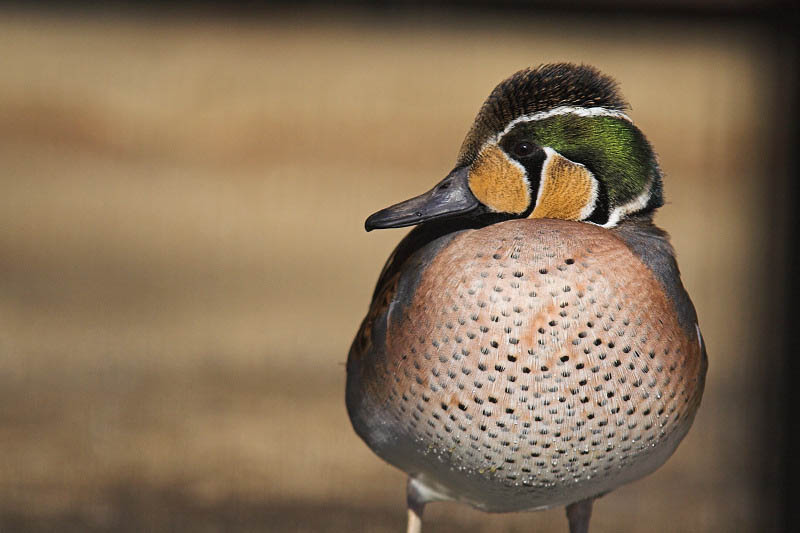
Source: Wikipedia
The Baikal teal is a species of dabbling duck found in eastern Russia and East Asia. It is also known as the bimaculate duck or squawk duck. The Baikal teal breeds in eastern Russia, and overwinters in parts of East Asia.
It is a medium-sized duck, between 16-20 inches in length, with a wingspan of 27-31 inches. The male is identified by its black head, gray breast, and white and black barred belly. Female Baikal teals are more mottled brownish-gray, with a barred pattern on the back.
Breeding pairs form in the spring, with the female laying 8-10 eggs in a nest on the ground. The ducklings are able to fly within a month of hatching, and the adults begin their southward migration in the fall.
The Baikal teal is not considered a threatened species, though its numbers have decreased in recent years due to hunting, loss of habitat, and pollution.
| Kingdom | Animalia |
| Phylum | Chordata |
| Class | Aves |
| Order | Anseriformes |
| Family | Anatidae |
| Genus | Sibirionetta |
| Species | S. formosa |
5. Rock Pigeon
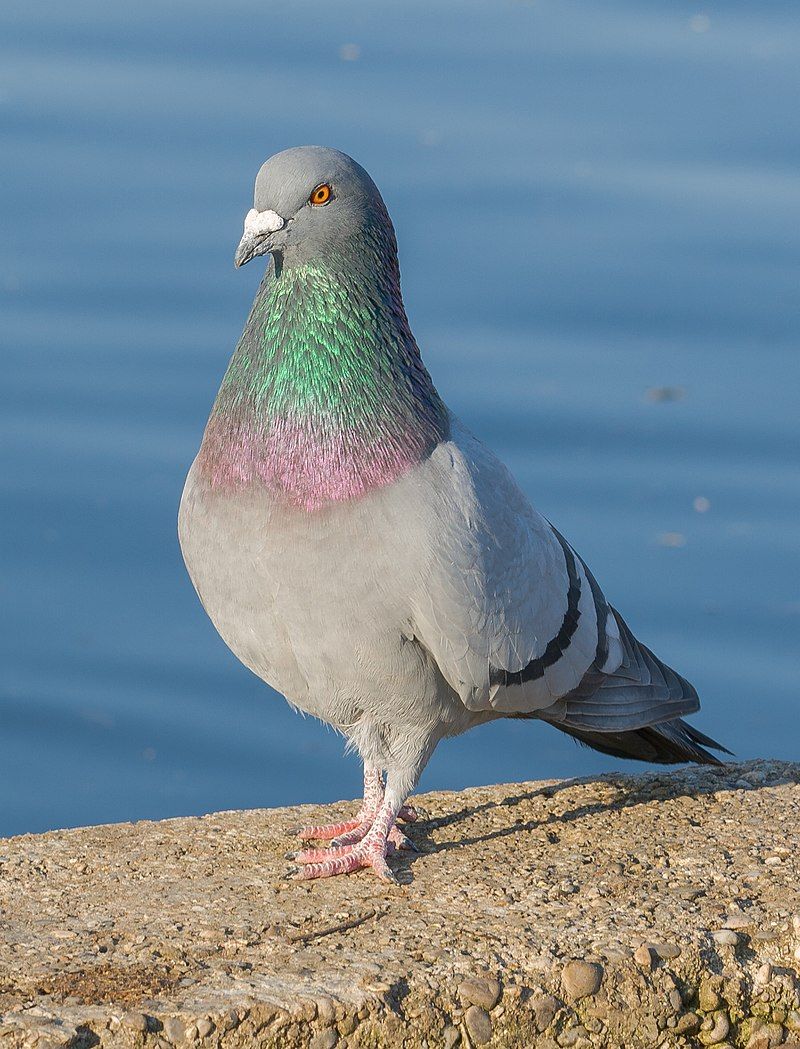
The rock dove, rock pigeon, or common pigeon is a species of bird that belongs to the Columbidae family. It is most commonly referred to as a “pigeon” and can be found in many parts of the world.
The domestic pigeon is a descendant of this species and is the result of domestication. As a result of this domestication, some domestic pigeons have escaped and reproduced in the wild, increasing the populations of feral pigeons around the world.
Feral pigeons are those that have grown accustomed to human presence and have become a common sight in cities and towns. They are often fed by humans, which has caused them to become less fearful of humans than their wild relatives.
As a result, they are able to thrive in environments with a lot of human presence, as well as in more natural environments.
| Kingdom | Animalia |
| Phylum | Chordata |
| Class | Aves |
| Order | Columbiformes |
| Family | Columbidae |
| Genus | Columba |
| Species | C. livia |
6. Great Spotted Woodpecker
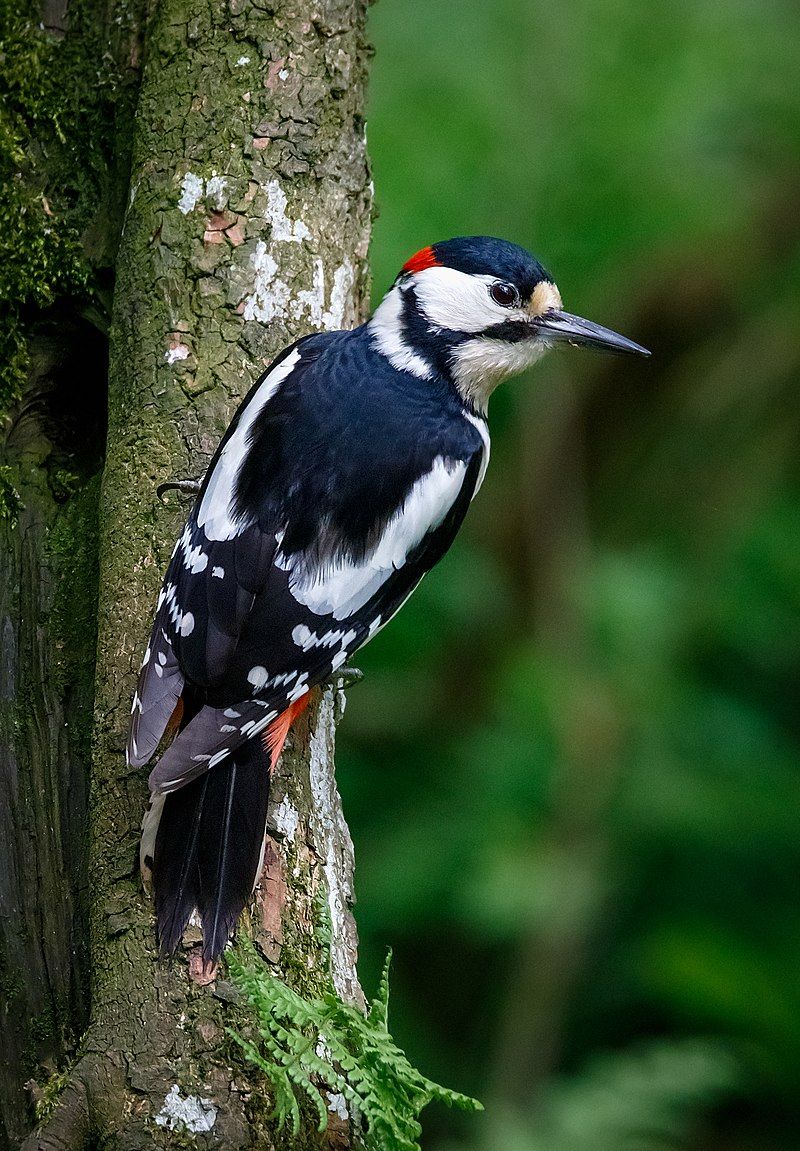
The great spotted woodpecker is a unique bird found in the Palearctic region, which includes parts of North Africa. It has a medium-sized body, and its plumage is a combination of black and white, creating a piebald effect.
Additionally, males and young birds have red markings on their necks or head. Lastly, this species has a red patch on its lower belly.
This species of woodpecker is common in the Palearctic region and has adapted to a wide variety of habitats, from forests and woodlands to parks and gardens. Its diet consists of insects, larvae and other invertebrates, as well as seeds, nuts, and fruit.
It will also use its powerful beak to strip bark from trees and dig into dead wood to search for food. The great spotted woodpecker is an important species in the Palearctic region, and its presence ensures the balance of the food chain.
It also plays an important role in controlling insect populations, as it feeds on larvae and other invertebrates that can damage trees and crops.
Therefore, it is important to protect the habitat of this species so that it can continue to thrive and play an important role in the environment.
| Kingdom | Animalia |
| Phylum | Chordata |
| Class | Aves |
| Order | Piciformes |
| Family | Picidae |
| Genus | Dendrocopos |
| Species | D. major |
7. Long-Billed Plover
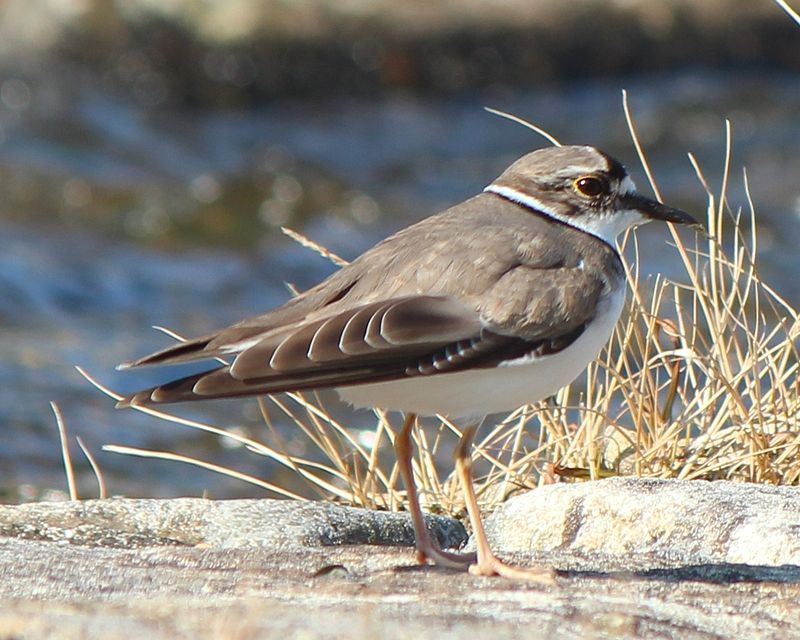
The long-billed plover is a species of wading bird found in many countries across Asia. It is part of the family Charadriidae, which consists of shorebirds such as plovers, sandpipers, and snipes.
The long-billed plover can be found in Bangladesh, Bhutan, Brunei, Cambodia, China, Hong Kong, India, Indonesia, Japan, Laos, Malaysia, Mongolia, Myanmar, Nepal, North Korea, Russia, South Korea, Sri Lanka, Taiwan, Thailand, and Vietnam. This species is characterized by its long, thin bill and its black and white body.
It is a ground-dwelling bird which feeds on insects, crustaceans, and other small invertebrates. The long-billed plover prefers to inhabit coastal areas such as estuaries, mudflats, and beaches.
It is also found in open grasslands and cultivated fields. The long-billed plover is an important species in the avian community of Asia.
It is an important part of the food web, feeding on insects and other invertebrates, which in turn are prey to larger birds, reptiles, and mammals.
It is also an important indicator of the health of Asian ecosystems, as its presence can indicate the presence of healthy wetlands and other habitats.
| Kingdom | Animalia |
| Phylum | Chordata |
| Class | Aves |
| Order | Charadriiformes |
| Family | Charadriidae |
| Genus | Charadrius |
| Species | C. placidus |
8. White-Backed Woodpecker
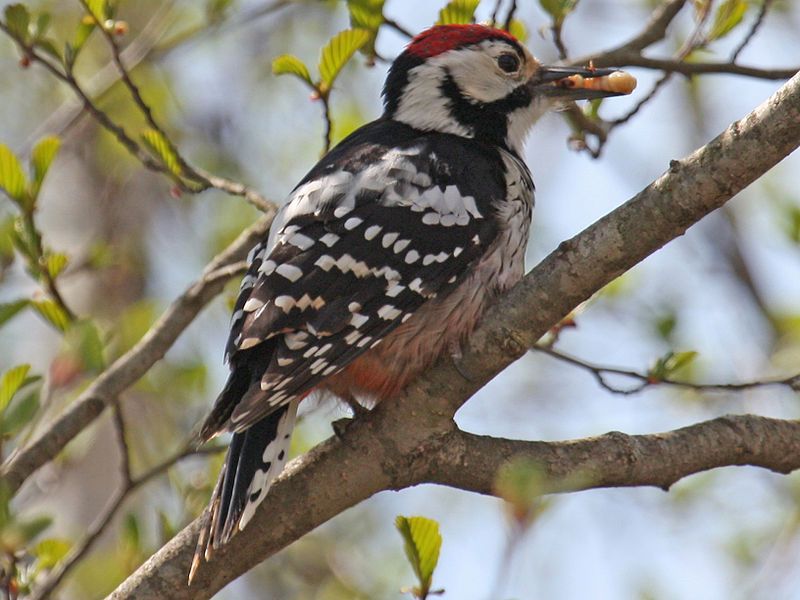
The white-backed woodpecker is a species of woodpecker that can be found across the Eurasian continent. It is a member of the genus Dendrocopos, a group of woodpeckers that are characterized by their distinctive white back feathers.
This species has a mainly black body, with a white back and a white stripe on its nape. It also has a bright red crown, moustache, and tail feathers. The white-backed woodpecker is usually found in deciduous woods, but can also be seen in some coniferous forests.
Its diet consists mostly of insects, larvae, and small invertebrates. It is known to use its strong beak and long tongue to extract food from the crevices of trees.
As a highly adaptable species, the white-backed woodpecker is found across a wide range of habitats and can be seen in many different parts of Europe.
| Kingdom | Animalia |
| Phylum | Chordata |
| Class | Aves |
| Order | Piciformes |
| Family | Picidae |
| Genus | Dendrocopos |
| Species | D. leucotos |
9. Northern Hawk-Cuckoo
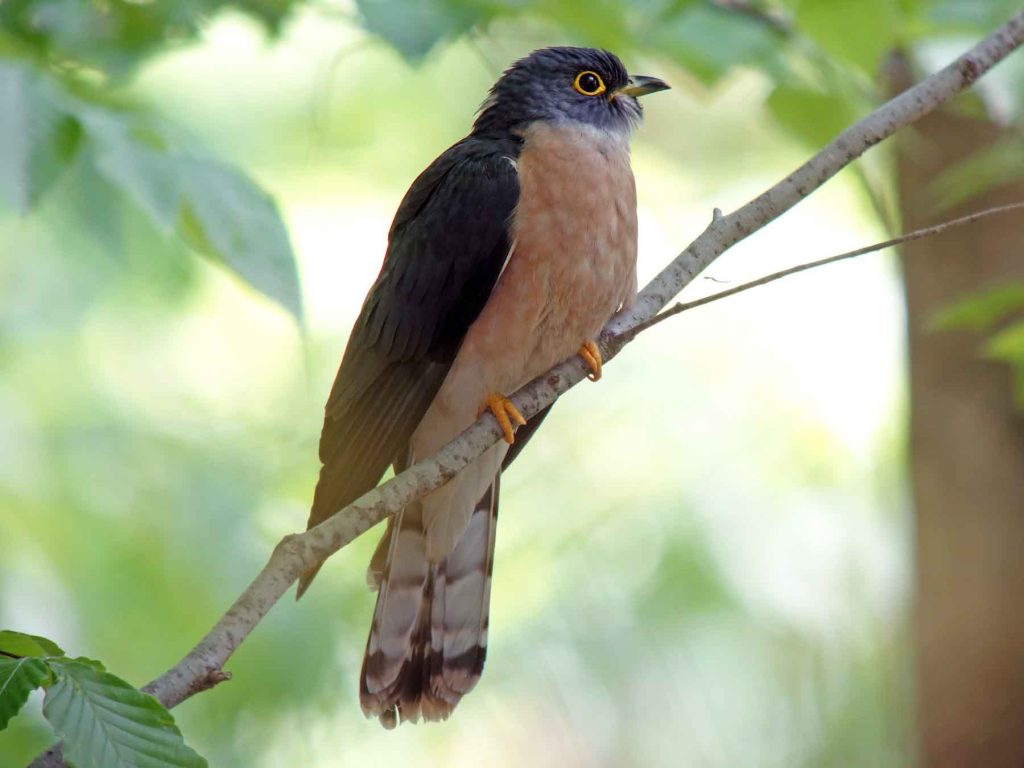
Source: ebird.org
The northern hawk-cuckoo is a species of bird that is part of the Cuculidae family. It is found in eastern China, North and South Korea, far eastern Russia, and Japan.
In the past, it was thought to be the same species as Hodgson’s hawk-cuckoo and was thus placed in the same genus, Cuculus. The northern hawk-cuckoo migrates seasonally, with northern populations wintering in Borneo. It is a medium-sized bird, approximately 20–25 cm long.
The plumage is mainly greyish-brown, with a barred pattern on the wings and tail. Its diet mainly consists of insects and small invertebrates. The northern hawk-cuckoo is typically found in open habitats, such as grasslands and woodlands.
It is a solitary bird, and can usually be seen perched atop a tree, looking out for prey. The species is not considered threatened or endangered.
| Kingdom | Animalia |
| Phylum | Chordata |
| Class | Aves |
| Order | Cuculiformes |
| Family | Cuculidae |
| Genus | Hierococcyx |
| Species | H. hyperythrus |
10. Japanese Pygmy Woodpecker
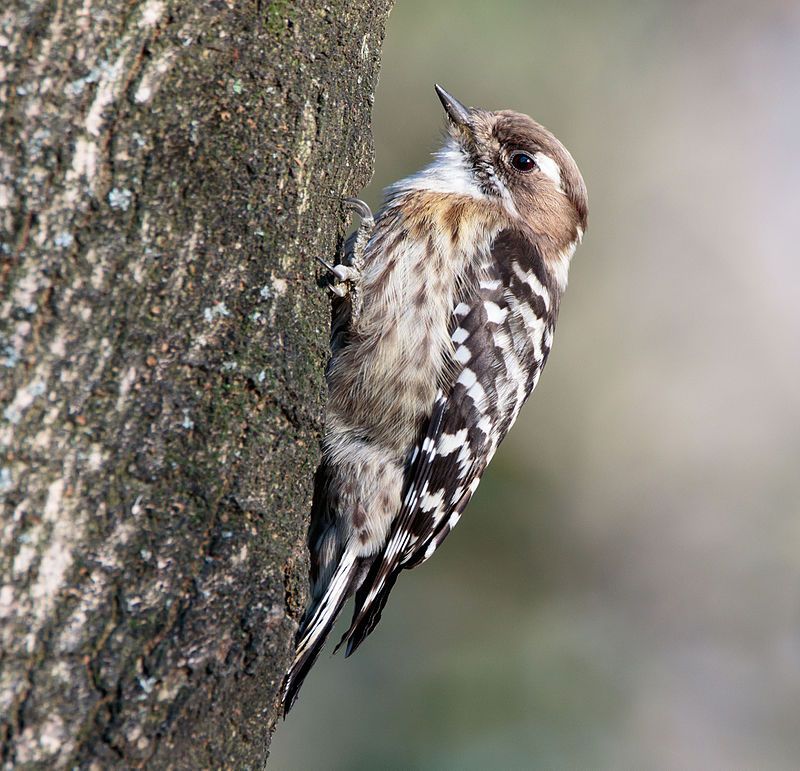
The Japanese Pygmy Woodpecker is a species of woodpecker found in a variety of forests across Russia, China, Korea, and Japan. This species is unique in that it has been placed in two separate genera, Dendrocopos and Picoides.
It thrives in coniferous and deciduous forests and can be identified by its small size and distinctive black-and-white markings. It is an omnivore, feeding on a variety of insects, fruits, and nuts.
The Pygmy Woodpecker is an important part of the local ecosystem, helping to spread the seeds of the plants it eats. It is also an important source of food for larger birds of prey.
Unfortunately, the Pygmy Woodpecker is threatened by deforestation and habitat loss, as well as predation from larger birds of prey. Conservation efforts are needed to ensure the survival of this species.
| Kingdom | Animalia |
| Phylum | Chordata |
| Class | Aves |
| Order | Piciformes |
| Family | Picidae |
| Genus | Yungipicus |
| Species | Y. kizuki |
11. Asian Brown Flycatcher
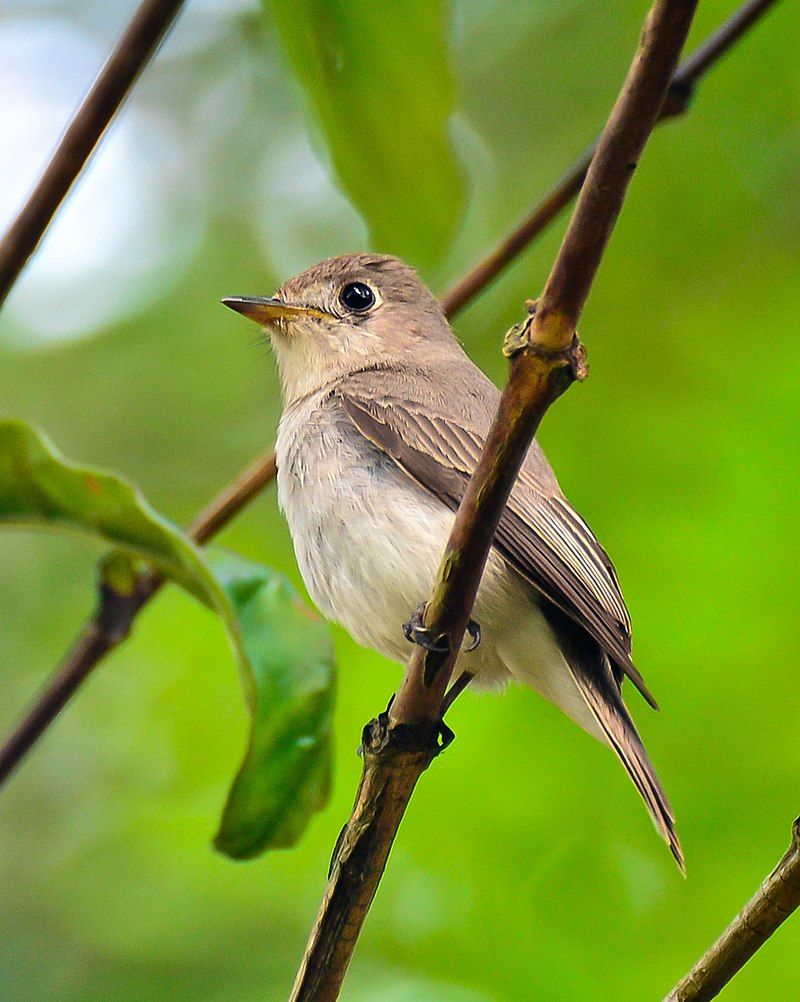
The Asian brown flycatcher is a species of small bird belonging to the family Muscicapidae, commonly known as the flycatcher family.
This family of birds gets their name from the Latin words musca, which translates to “fly,” and capere, which means “to catch.” This name is appropriate, as these birds are adept at catching flying insects in midair.
The specific species dauurica is named after the area of south-eastern Siberia known as Dauria. This region was named after the local nomadic tribe that inhabited the area until recent times.
The Asian brown flycatcher is a unique species that has adapted to the region’s environment over the centuries and is now found in other parts of the world as well.
| Kingdom | Animalia |
| Phylum | Chordata |
| Class | Aves |
| Order | Passeriformes |
| Family | Muscicapidae |
| Genus | Muscicapa |
| Species | M. dauurica |
12. Copper Pheasant
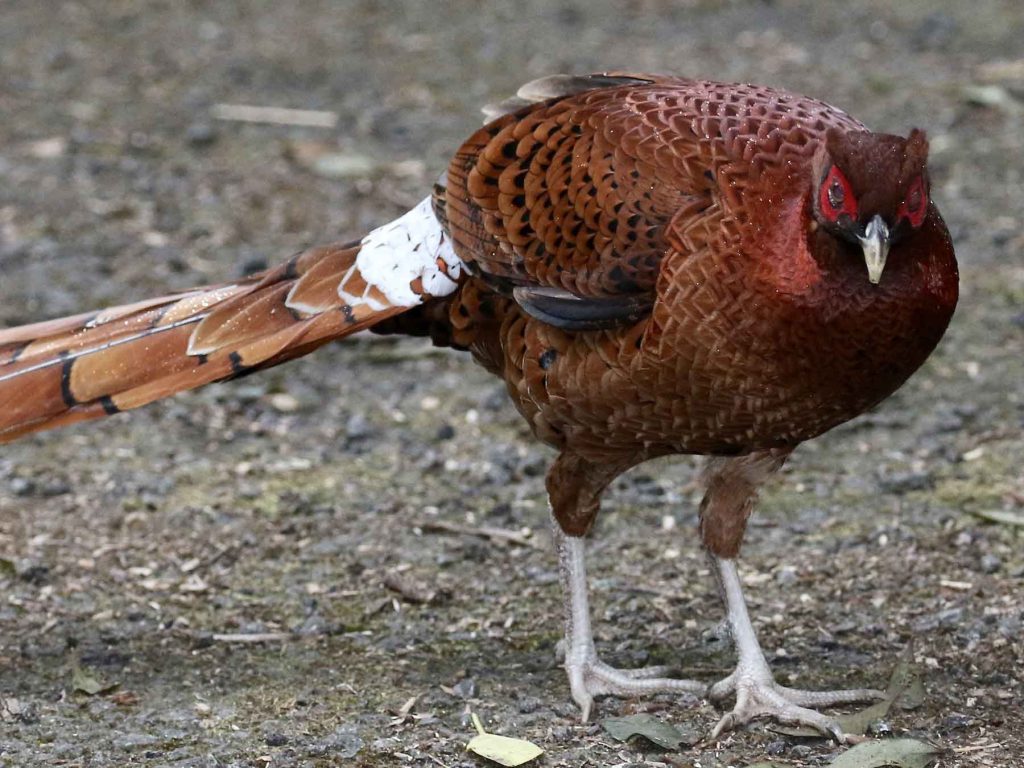
Source: ebird.org
The copper pheasant, also known as Soemmerring’s pheasant, is a species of bird found only in Japan. It is a unique species, easily recognizable by its distinctive reddish-brown plumage.
Its scientific name, Syrmaticus soemmerringii, is derived from the German scientist Samuel Thomas von Sömmerring, who first identified it in the late 1700s. Sömmerring was a renowned anatomical and zoological researcher, best known for his work in comparative anatomy.
He was also an early proponent of evolutionary theory and studied a variety of species in an effort to better understand the biology and evolution of living things.
It is likely that he encountered the copper pheasant during one of his many trips to Japan, and he was the first to accurately describe and name the species.
Since its discovery, the copper pheasant has become a symbol of Japan, and it is now a protected species within the country. Its colorful plumage and unique features make it an attractive bird, and it is a popular choice for bird watchers and nature enthusiasts alike.
It is also an important part of the local ecosystem, and its conservation is vital for maintaining biodiversity in the region..
| Kingdom | Animalia |
| Phylum | Chordata |
| Class | Aves |
| Order | Galliformes |
| Family | Phasianidae |
| Genus | Syrmaticus |
| Species | S. soemmerringii |
13. Blue-and-White Flycatcher
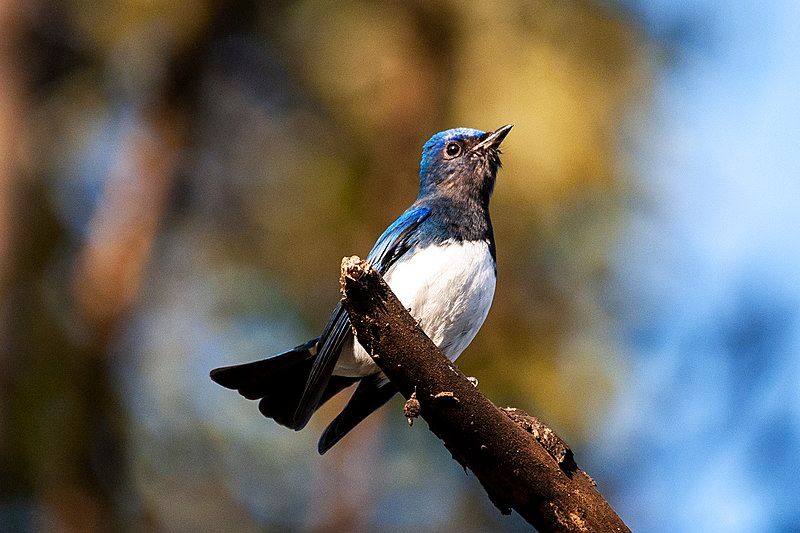
The blue-and-white flycatcher is a migratory songbird that belongs to the Old World flycatcher family Muscicapidae. It is commonly known as the Japanese flycatcher, due to its habit of breeding in Japan, Korea, and some parts of China and the Russian Far East.
This species is believed to have a range of over 1,000 kilometres, flying from its breeding grounds to other areas for the winter season. The blue-and-white flycatcher is a medium-sized bird, typically measuring between 14 to 16 centimetres in length.
It is mainly coloured with shades of blue and white, and has a black tail with white tips. The male bird is usually brighter than the female, and both sexes have a distinct white spot on their wings. The flycatcher feeds mainly on insects, which it catches in mid-air.
It nests in trees or shrubs, usually close to its breeding grounds. The female builds the nest, which is a cup-like structure made of weeds and leaves.
During the breeding season, the male and female take turns in incubating the eggs and feeding their young. The blue-and-white flycatcher is a common species in its breeding range and is not considered to be threatened.
However, it is listed as a vulnerable species in the Chinese Red List of Birds, as its population is decreasing due to habitat loss and degradation. Conservation efforts are needed to ensure the species’ long-term survival.
| Kingdom | Animalia |
| Phylum | Chordata |
| Class | Aves |
| Order | Passeriformes |
| Family | Muscicapidae |
| Genus | Cyanoptila |
| Species | C. cyanomelana |
14. Japanese Accentor
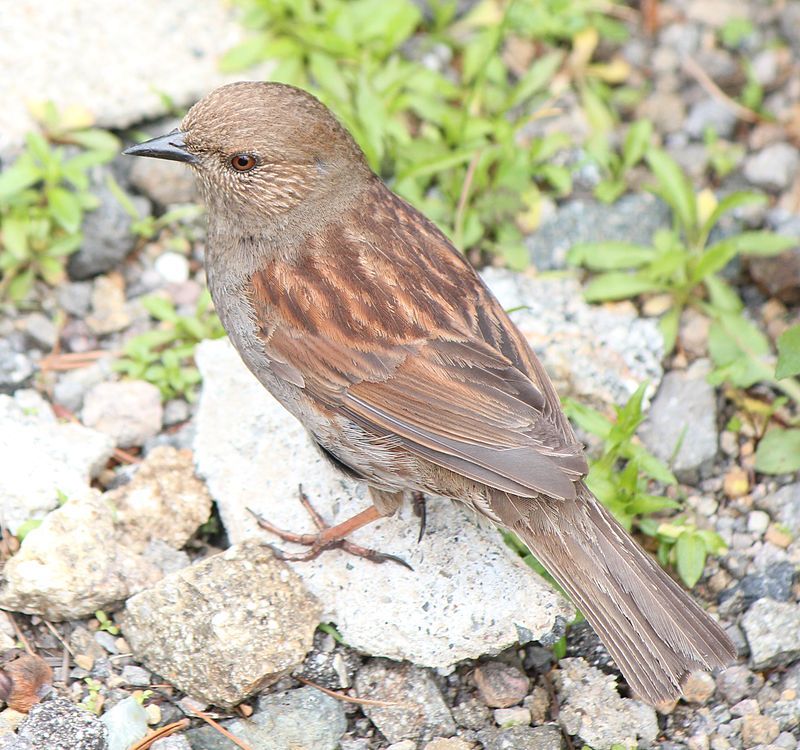
The Japanese Accentor is a species of bird belonging to the Prunellidae family. It is native to Japan and Sakhalin, two areas known for their temperate forests.
This species of bird is adapted to live in these temperate forests, which are characterized by moderate temperatures and abundant vegetation. The Japanese Accentor is a small bird, with a length of about 15cm and a wingspan of around 24cm.
It has a brownish-grey plumage with a lighter shade of grey on its underparts. The head is light brown with a light yellowish streak on the forehead. Its diet consists of insects, berries, and some seeds.
It also feeds on small invertebrates that it finds while foraging on the ground. The Japanese Accentor is a shy bird, and will usually only be seen in the early morning or late evening hours. It is not migratory and will remain in the same area year-round.
The Japanese Accentor is an important part of the temperate forest ecosystem, and its conservation is essential for the health of the ecosystem.
| Kingdom | Animalia |
| Phylum | Chordata |
| Class | Aves |
| Order | Passeriformes |
| Family | Prunellidae |
| Genus | Prunella |
| Species | P. rubida |
15. Woodpecker
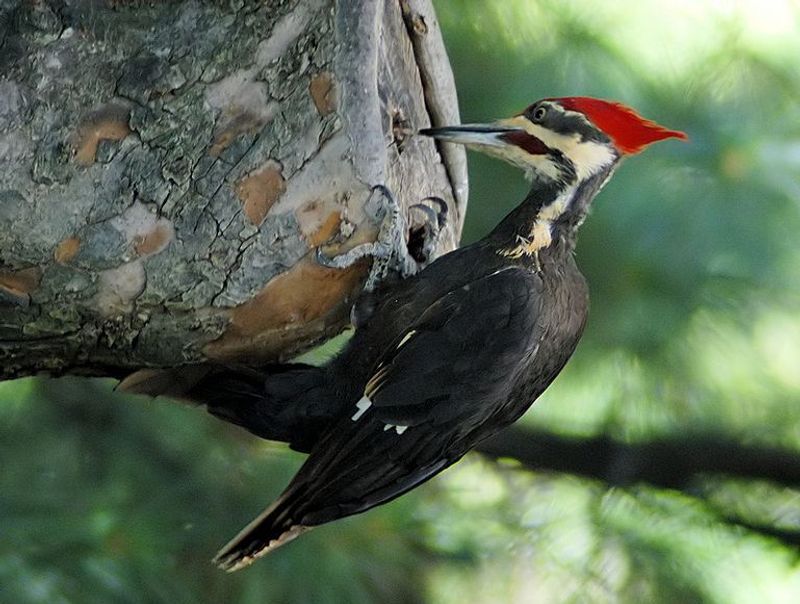
The Picidae family of birds includes woodpeckers, piculets, wrynecks, and sapsuckers. These birds are found all over the world, except for certain regions like Australia, New Guinea, New Zealand, Madagascar, and the polar regions.
Woodpeckers are especially well-known for their ability to peck into trees and other surfaces, making them excellent hunters of insects, larvae, and other small creatures. They also have a unique, stiff tail that helps them balance while pecking.
Piculets, wrynecks, and sapsuckers are all smaller versions of woodpeckers and have similar characteristics, except that they lack the woodpecker’s stiff tail. They use their beaks to forage for insects and often feed on the sugary sap of trees.
All of these birds have specialized adaptations that help them survive in their environment, and though they may look different, they are all part of the same family.
| Kingdom | Animalia |
| Phylum | Chordata |
| Class | Aves |
| Order | Piciformes |
| Family | Picidae |
Conclusion
Nagano is home to a wide variety of birds. From the majestic golden eagle to the colorful azure-winged magpie, Nagano offers an abundance of bird-watching opportunities.
With its diverse habitats, Nagano is a great place to explore and observe the many different species of birds that call the region home. With its unique environment and abundance of birds, Nagano is an ideal place for birders of all skill levels to explore and observe nature.